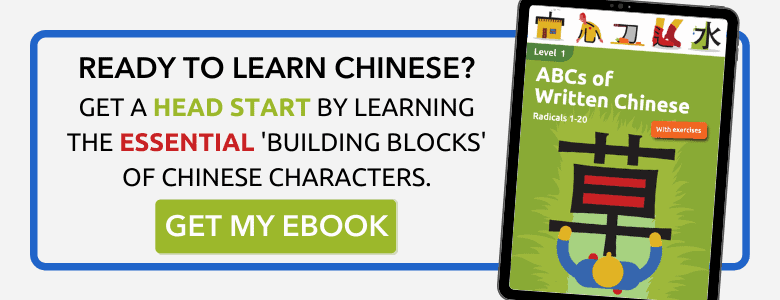We have already looked at some Chinese greetings and farewells, as well as some phrases for beginners. Now it’s time to focus on learning some simple verbs and starting to construct basic sentences. You may notice that sometimes the Chinese character has more than one meaning. Still, we have chosen the most frequently used or most appropriate verb for a beginner of Chinese for the purpose of this post. If you haven’t already, it’s an excellent time to take a look at some of the Chinese characters and try to remember what they look like.
You can create a mnemonic or story to help you remember their meaning, pronunciation, and even tone. If you think of a useful mnemonic, share it with your fellow Chinese learners on the character page within our Online Dictionary. The story you create to remember a character can be straightforward, like the one I use to remember the character 要 or more complex like the one below.
You can see this example by visiting the page for the character 量.

Don’t forget to click on the red-linked Chinese characters to listen to the pronunciation, watch how to write the character, and view the character’s radicals, pinyin, and example sentences. You can also toggle between simplified and traditional characters!
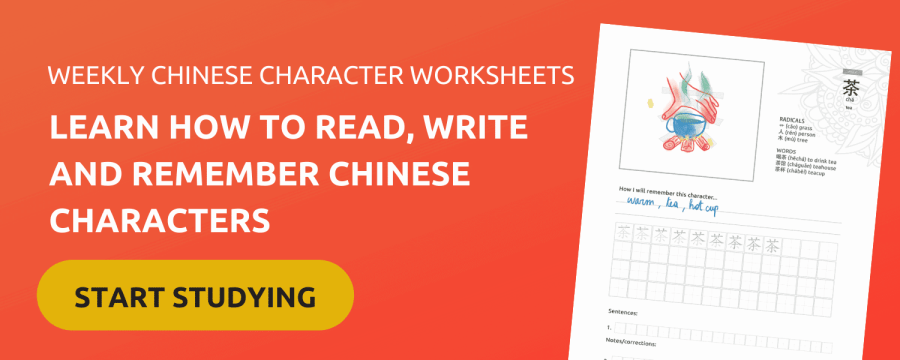
Below is a list of 20 Chinese verbs with example sentences for you to learn. In Chinese, most simple sentences, like the ones below, follow this sentence pattern:
Subject + verb phrase + object
You can learn about different sentence patterns in our article about Chinese Sentence Structures.
1. to want 要 (yào)
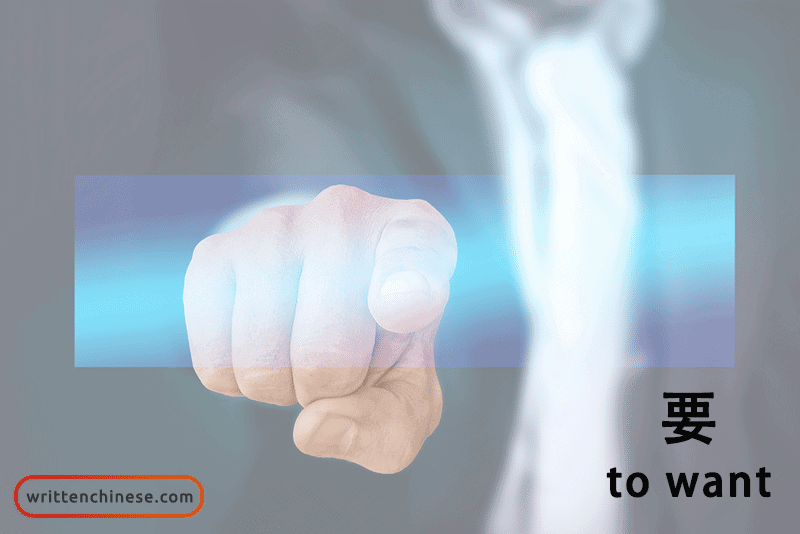
The original meaning of this character was ‘waist’ 腰 (yāo) and depicted a woman 女 (nǚ) pointing to her midsection 西 (xī).
I want an apple. 我要一个苹果。(wǒ yào yī gè píng guǒ.)
2. to eat 吃 (chī)

The character 吃 (chī) has the mouth 口 (kǒu) radical, and the character 乞 (qǐ) meaning to beg. This right side of the character provides the pronunciation of the character (qǐ –>chī).
I am eating noodles. 我在吃面。 (wǒ zài chī miàn.)
3. to drink 喝 (hē)

The 喝 (hē) character features the mouth 口 (kǒu) radical to the left. On the top right-hand side is the sun 日 (rì), underneath there is a man 人 (rén) leaning against an object and sitting in the shade. This suggests that a person might drink something when taking a rest from working in the sun.
I drink tea. 我喝茶。(wǒ hē chá.)
4. to take 拿 (ná)
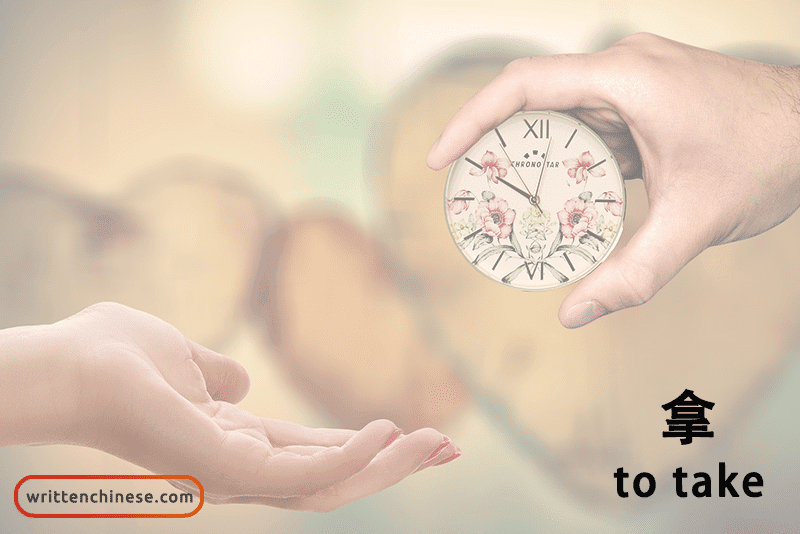
The 拿 (ná) character depicts a hand 手 (shǒu) on the bottom of the character, while on the top is the character for unity 合 (hé). If you take something into your hand, then you have unity and togetherness.
Please take the book 请拿上这本书。(qǐng ná shàng zhè běn shū.)
5. to give 给 (gěi)
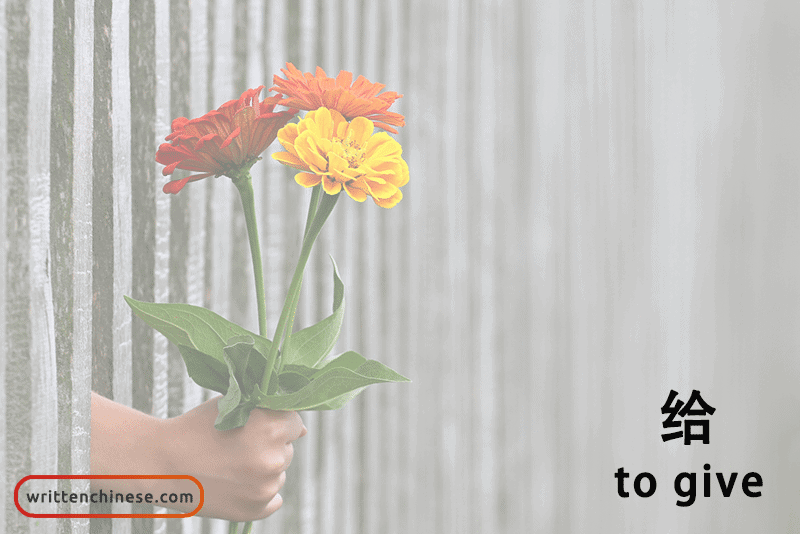
The radical on the left side of the character 给 (gěi) is silk 丝 (sī), traditionally given as a present. Combined with the character for unity 合 (hé) suggests happiness when giving something.
Please give me… 请给我…(qǐng gěi wǒ…)
6. to open 打开/开 (dǎ kāi / kāi)
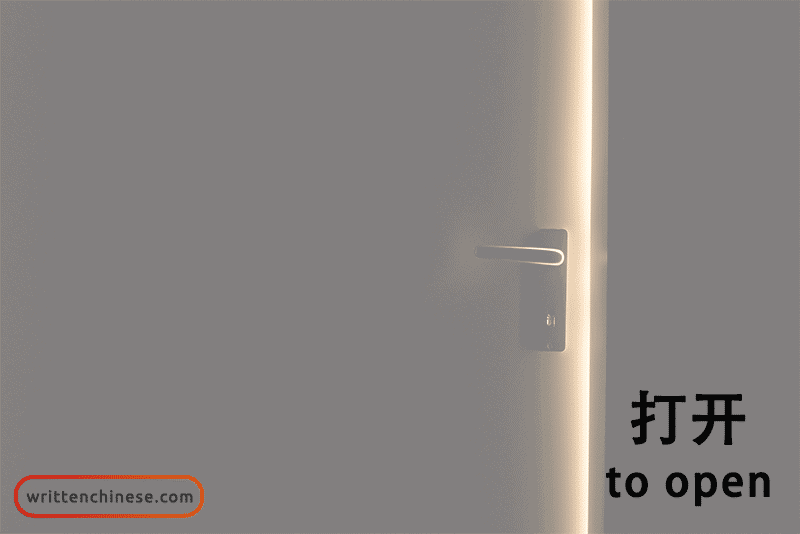
It’s easier to look at the traditional character (開) of 开 (kāi) to understand why it looks the way it does. Once surrounded by a door 門 (mén), the 开 represented two hands, removing a bolt or bar from the door to open it.
Open the door 开门 (kāi mén)
7. to have 有 (yǒu)
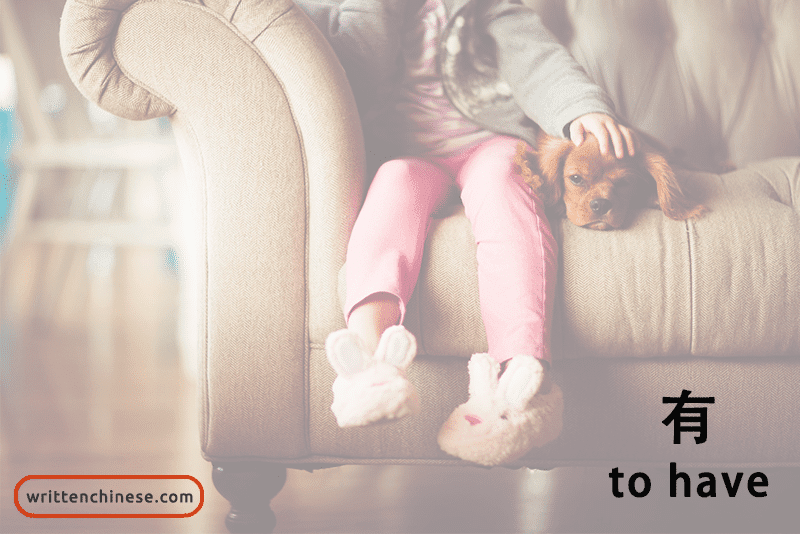
Initially, the top part of the 有 (yǒu) character resembled a hand 手 (shǒu), and the bottom radical looked more like meat 肉 (ròu). Now, man has forgotten about meat and strives to possess or have the moon 月 (yuè), which now makes up the character’s bottom.
I have a younger brother. 我有一个弟弟。 (wǒ yǒu yī gè dì di.)
8. to know 知道 (zhī dao)
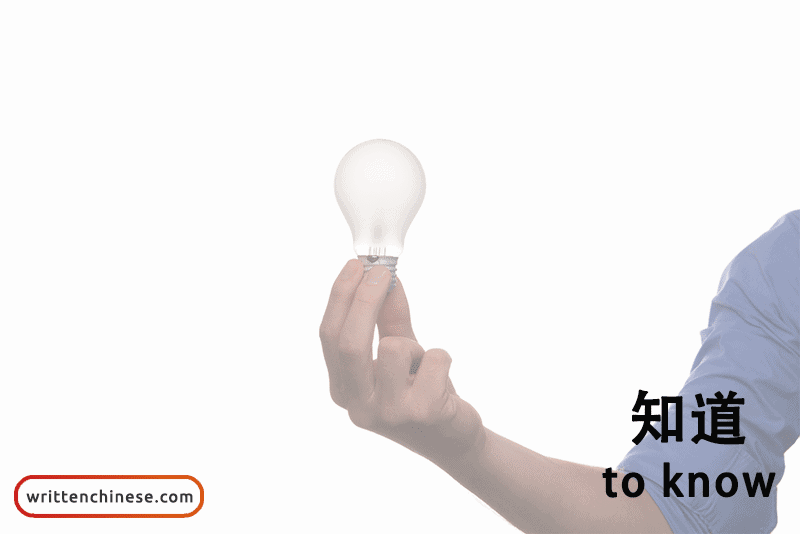
The character 知 (zhī) shows an arrow 矢 (shǐ) and a mouth 口 (kǒu), which represents knowledge. The idea is that a person with knowledge speaks 口 (kǒu) with the precision of an arrow 矢 (shǐ).
I know. 我知道。 (wǒ zhī dao)
9. to like 喜欢 (xǐ huan)

The 喜 (xǐ) character represents happiness, often expressed with music and singing. The top half of the character depicts a drum on its stand and a hand striking it.
I like her. 我喜欢她。 (wǒ xǐ huan tā)
10. to love 爱 (ài)

The simplified character of 爱 (ài) is made up of three parts: ‘breathe’, ‘hand,’ and ‘co-operation’. This suggests that love is more about friendship, which is represented by the hand 手 (shǒu) than by the heart 心 (xīn), which is seen in the traditional character of love 愛 (ài).
I love him 我爱他。(wǒ ài tā)
11. to be 是 (shì)/ 成为 (chéng wéi)

In Chinese, the character 是 (shì), not only means ‘to be’, but can also sometimes be used to say ‘yes’ or ‘correct’. 是 (shì) shows the sun 日 (rì) over the character for ‘exact’, 正 (zhèng). The meaning is that the sun is precisely on the meridian line and, therefore, a correct standard.
I am a teacher. 我是一个老师。(wǒ shì yī gè lǎo shī.)
12. to do/make 做 (zuò)

The character 做 (zuò) shows a man 人 (rén) causing 故 (gù) an effect by doing something.
I make dinner every day. 每天我都做晚饭。(měi tiān wǒ dōu zuò wǎn fàn.)
13. to sit 坐 (zuò)
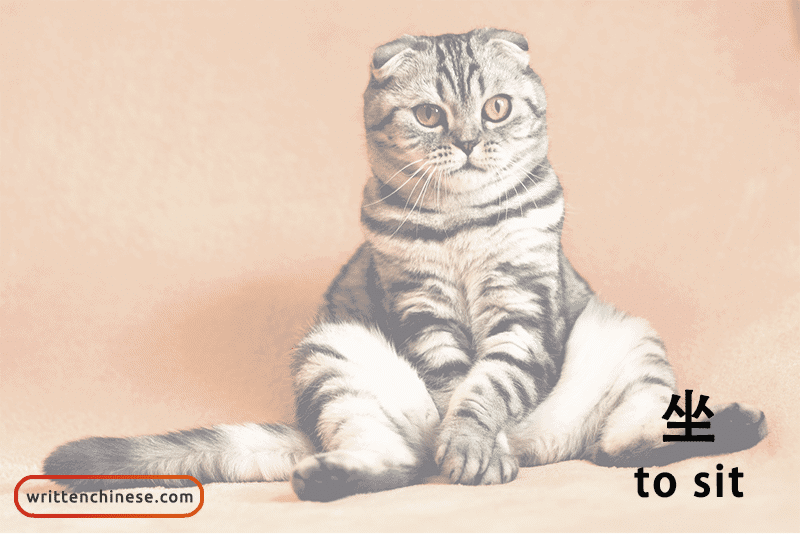
The character 坐 (zuò) is a pictograph depicting two men 人 (rén) 人 sitting on the ground 土 (tǔ) facing each other.
I usually sit there when I go to the library. 当我去图书馆我习惯坐那里。 (dāng wǒ qù tú shū guǎn wǒ xí guàn zuò nà li.)
14. to see 看 (kàn)

The character 看 (kàn) depicts a hand 手 (shǒu) covering the eyes 目 (mù) as it looks at the sun.
I like to watch movies. 我喜欢看电影。(wǒ xǐ huan kàn diàn yǐng.)
15. to go 去 (qù)

去 (qù) is a pictograph of an empty vessel 厶 (sī), say a bowl or pot and its cover, represented by the 土 (tǔ). Once the lid is taken off, the contents of the vessel are ready to ‘go’.
I go to Beijing often. 我经常去北京。(wǒ jīng cháng qù běi jīng.)
16. to use 用 (yòng)
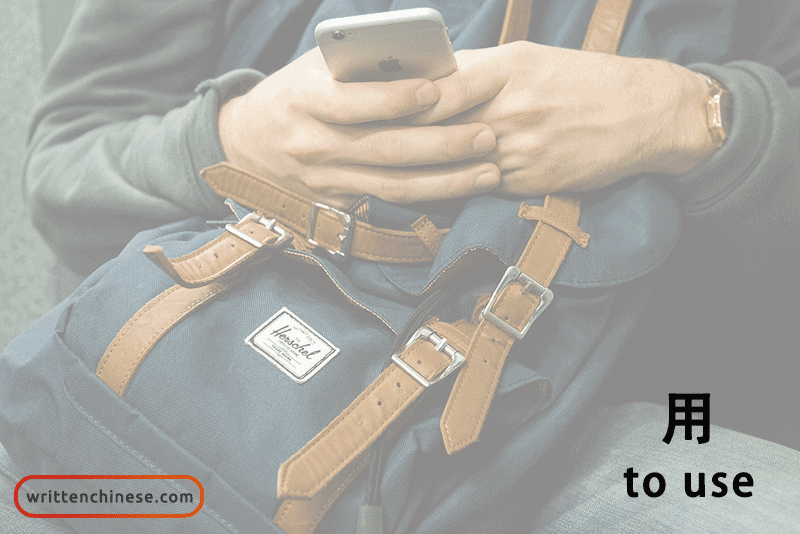
The original form of the 用 (yòng) character was a water bucket 桶 (tǒng). The character 用 (yòng) takes its pronunciation from the 桶 (tǒng) character.
I use my mobile phone too much. 我用手机的频率太高了。 (wǒ yòng shǒu jī de pín lǜ tài gāo le)
17. to find 找 (zhǎo)
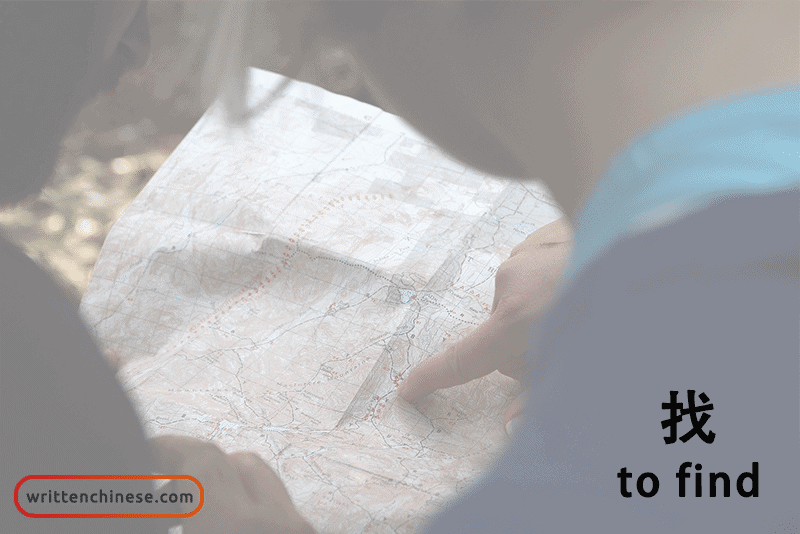
The 找 (zhǎo) character is made of a hand 手 (shǒu) and a spear 戈 (gē), suggesting a time when food needed to be found.
I can find the book. 我可以找到那本书。(wǒ kě yǐ zhǎo dào nà běn shū.)
18. to tell 告诉 (gào su)

The second character 诉 (sù) features the ‘speech radical’ 讠 (yán) and the character 斥 (chì) meaning ‘to reprimand’.
Tell me his phone number 告诉我他的电话号码。(gào su wǒ tā de diàn huà hào mǎ.)
19. to ask 问 (wèn)
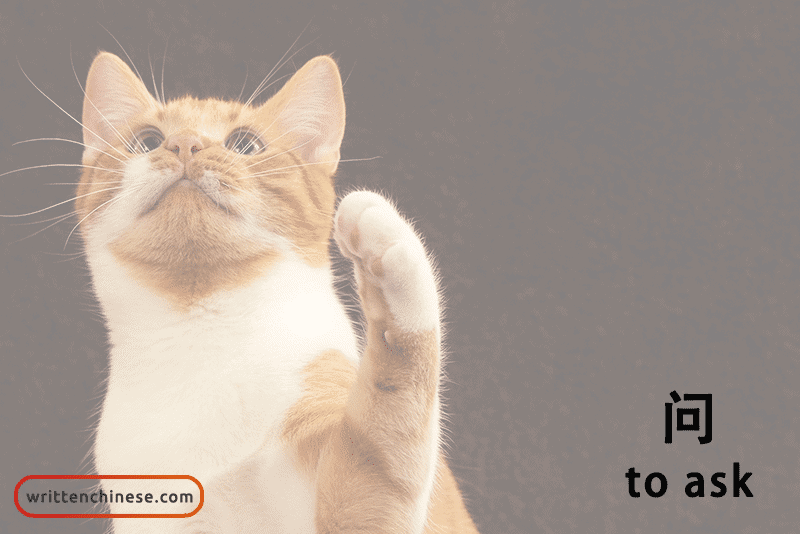
The 问 (wèn) character shows a door 门 (mén) surrounding a mouth 口 (kǒu). As many introductions would occur in the entrance to a house in Chinese culture, it would be a place where neighbors would ask or inquire about the family inside.
Please ask your friend. 请问你的朋友。(qǐng wèn nǐ de péng you.)
20. to think 想 (xiǎng) /觉得 (jué de)

The character 想 (xiǎng) is composed of three parts: the tree 木 (mù), the eye 目 (mù), and the heart 心 (xīn). An interpretation of the character is that the eye is behind the tree looking out for or inspecting possible danger. The heart in Chinese culture often represents both heart and mind and suggests the examination of the heart, thinking, or pondering.
I think it’s strange. 我觉得很奇怪。 (wǒ jué de hěn qí guài.)
If you have any questions or comments about our article on Chinese verbs, please leave them below.
